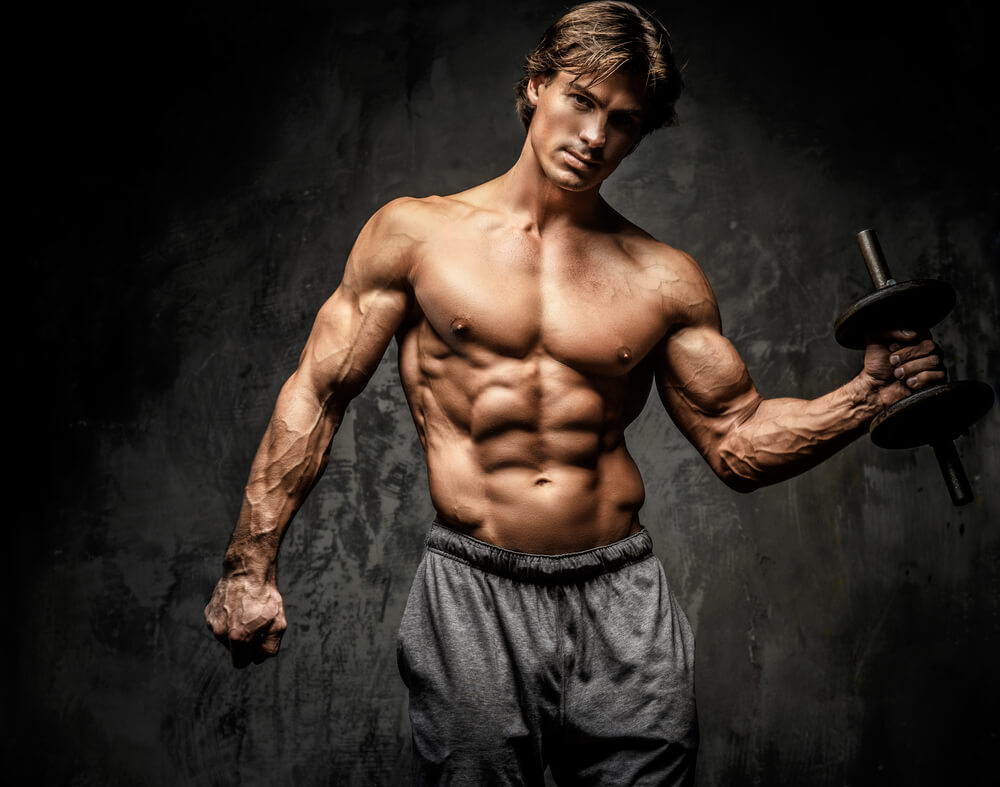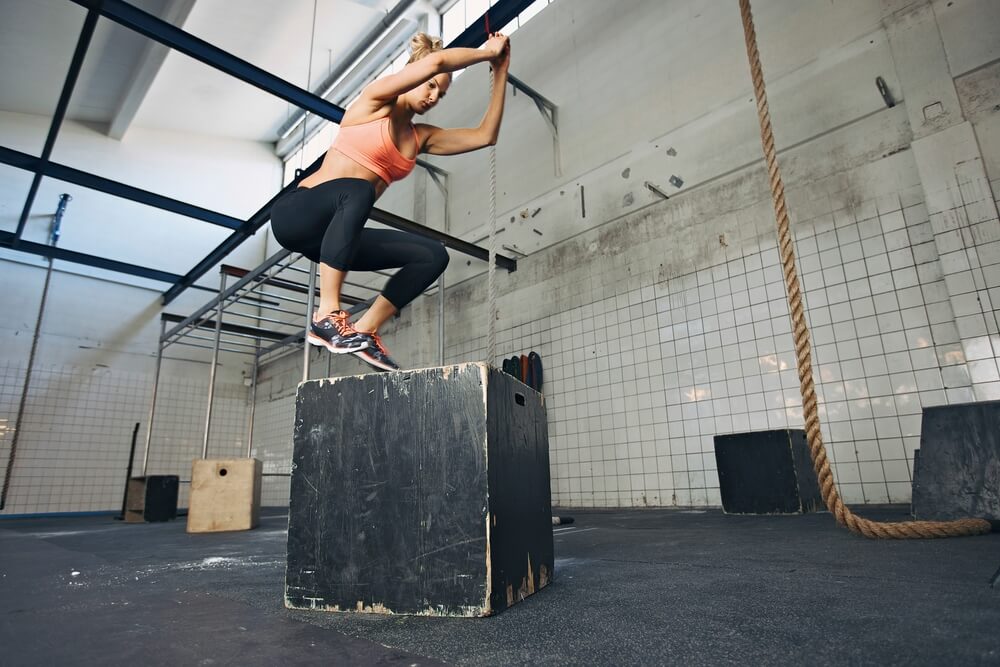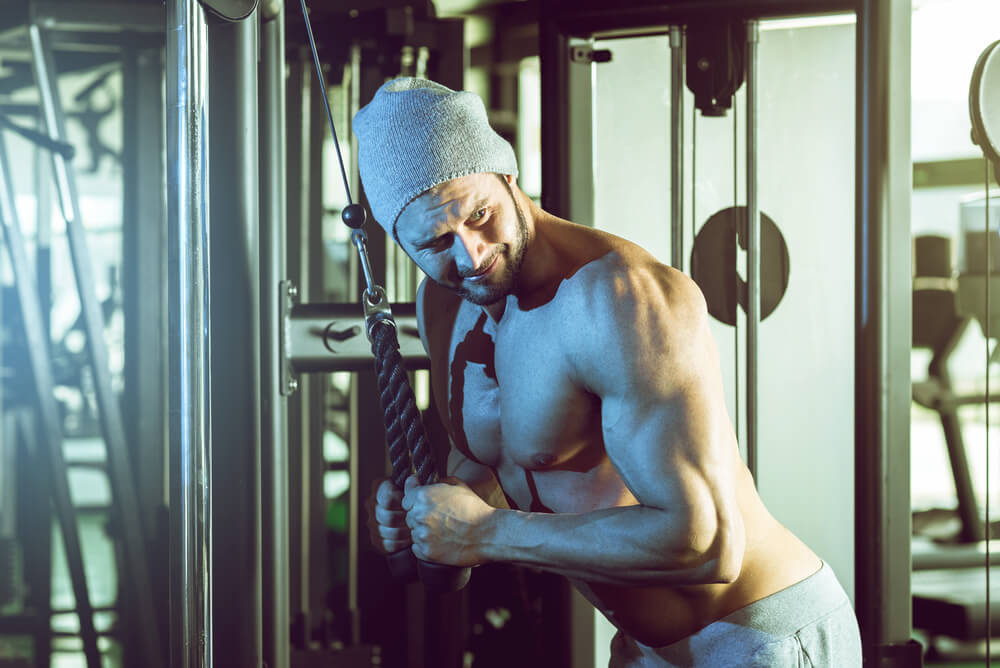
With this plan in your back pocket, you’ll hit your body in a totally different way. Get ready to train single-sided and see results faster than ever.
Many experienced lifters and anyone who has had a personal trainer know how to design a workout.
Some even become students of exercise theory and science and know how to put together a plan for more than one day. But, more often than not, experienced lifters tend to gravitate towards either what is comfortable and what they know, or the famous barbell.
Of course, the barbell is a great tool for building size and strength. But, the barbell is not the only method that can be used. In most cases, smaller implements such as dumbbells and kettlebells can be just as effective. In fact, for some people, they may even be better than the barbell.
Using implements such as dumbbells and kettlebells opens up a whole new dimension of training: Unilateral training. Unilateral (or single-side) training has many benefits. These benefits include, but are not limited to, evening out imbalances, strengthening synergist muscles and more core activation. What follows is an outline of some of the most important aspects of how unilateral training can help you in your training.
It Can Even Out Your Imbalances.
Have you ever looked at someone bench pressing and one arm appears stronger than the other? This is a pretty common state. More often than not, when one’s bench press looks like that, it is because of some kind of imbalance in their shoulders.
Doing something like a dumbbell bench press forces both shoulders to use the same amount of weight but handle it on their own versus having the stability of a barbell. This fabricated instability will train the body to know where it is in space (proprioception) and how to best position its limbs and joints for the most stability possible, increasing the efficiency of movement and making the body stronger.
Strength coaches will say “strength through stability.” They say that because the more balanced and stable the body is, the stronger the lifter is.
Unilateral Training Can Strengthen Your Synergist Muscles.
Many fitness gurus and trainers alike will advise non-traditional training implements for their ability to strengthen stabilizer muscles. What are stabilizer muscles? Nearly all the time, this phrase is referring to synergist muscles. Simply put, a true synergist muscle is one that fixes a bone or joint in a certain position to allow the agonist (main muscle being trained) to carry out its intended movement, as well as help out with the intended movement.
In the bench press example, the agonist is the pectoralis major, and some of the synergists would be the pectoralis minor, all three deltoids, the four muscles of the rotator cuff and the triceps. Yes, the traditional bench press works all of these muscles. But, because of the nature of a barbell and the tendency of one side of the body to be stronger than the other, the stimulus is inadequate to cause strength and size increases in the synergists.
You do not want that.
Using an implement that forces one side of the body to work without the other will cause the synergists to take on a bigger role in the exercise being performed. That will provide adequate stimulus for size and strength gains. As the synergists to certain moves get stronger, the agonists of these moves can focus more on its intended action, leading to size and strength gains in the muscles being worked. This works as a positive feedback loop leading to a cycle that never hits a plateau.
Unilateral Training Gives More Core Activation.
This is one thing that many people get right – single-side training does hit the core harder than traditional barbell moves do. Because of the body’s need to stand upright with good posture, adding weight to one side and not the other will force the opposing side to work harder to keep the body in the position it wants to be in.
Trying to squat without a strong core will lead to posture breakdown and the inability to get adequate depth on the squat, leading to back and knee injuries respectively. These can permanently end an exercise regimen, totally undermining a body’s ability to make gains in anything except body fat. Do not let this happen!

Here Is A Sample Workout Using Unilateral Training For Maximum Benefit.
Please note: Unilateral training is not meant to be a substitute for barbell work. It is meant to maximize the effectiveness of the workout.
Directions: Do the moves listed as 1, 2 and 3 in that sequence. There is to be no resting. Use weight that is heavy enough to handle for the set reps listed and no more.
- Box Jump x 3
Stand about one foot away from a box about knee height. Jump straight up in the air, making sure to fully extend your hips and land on the box, absorbing the impact through your legs. The quieter you land the better. Step off the box. Repeat for the prescribed reps.
- Sumo Deadlift x 3
Stand facing a loaded barbell. Your legs should be about double shoulder width apart, toes pointed out slightly. Squat down and grasp the bar with an alternating grip, making sure your shins are almost touching the bar. Sit your hips back and drive your heels into the floor to come to an upright position. Your body should form an upside down Y shape. Lower the bar. Repeat for the set number of reps.
- Single-Leg Stability Ball Leg Curl x 8 Each Side
Lie face-up on the floor, one leg draped over a stability ball, the other straight in the air. Raise your hips off the ground so your body is a straight line from shoulders to feet. This is the start position. Drive your heel into the ball and roll it in towards you, raising your hips as you curl, pause and slowly allow the ball to roll out. That is one rep. You should do the prescribed number of reps. After that, you should switch sides and repeat.
Sets: 4 Rest: 60 seconds
Directions: Perform the moves listed as 1, 2 and 3 in that sequence. There is to be no resting. Use weight that is heavy enough to handle for the set reps. Do not do any more than the prescribed reps.
- Front Squat x 5
Set up a barbell in a rack at just below shoulder height. Grasp the bar with an overhand grip, then walk towards it, allowing your elbows to drop under the bar and the bar to roll back to your fingertips.
When finished, the bar should be pressing lightly on the front of your neck, resting on your deltoids (you may feel a little pressure on your collarbone) and your elbows should be pointed straight forward. Unrack the bar by standing up, take a step back, push your hips back and allow your knees to bend until the top of your thigh is parallel to the floor. From there, return to a full upright position, hips fully extended, driving your elbows up throughout. That is one rep. Complete the set number of reps.
- Dumbbell Lateral Step-Up x 5 Each Side
Stand next to a box or bench about knee height, holding a pair of dumbbells at your sides. Place one foot on the box or bench. Press your heel into the box or bench, keeping the pressure on the outside of your foot, and stand on the bench.
Step off the box and slowly lower yourself to the ground. You have just done one rep. Do the set number of reps. Then, you should switch sides and repeat.
- Cable Face Pull x 8
Set up a cable cross pulley to chest height and attach a rope handle to it. Grasp the handle underhand (thumbs closest to you), draw your shoulders down and back and pull the ends toward your face until your fists reach your ears, elbows up and back.
It will look like you are flexing your biceps in the mirror. Slowly return to the start position. That is one rep. Do the set number of reps.
Sets: 3 Rest: 60 seconds
Directions: Do the moves listed as 1 and 2 in that sequence. There is to be no resting. Use weight that is heavy enough to handle for the set number of reps. Do no more than the set reps.
- Bench Press x 5
Set up a bench press station. Lie down on the bench so that your eyes are right under the bar and grasp the bar with a slightly wider than shoulder-width, overhand grip. Press the back of your head and shoulder blades into the bench, draw your shoulder blades down and back, arch your back and keep your feet on the floor.
Unrack the weight, maintaining body position, and bring it right over your chest. Slowly lower the bar to the center of your chest, touch your chest lightly with the bar and press the bar straight back up. That is one rep. Do the prescribed reps.
- Band Pull-Apart x 8
Hold a low-resistance band with an overhand grip, shoulder width apart, and have the band positioned in front of your chest. Keep your arms straight and draw your shoulders down and back. This is the start position.
Using your shoulder muscles, pull the band apart so that your arms are in line with your body. Pause for one second and slowly return to the start position. That is one rep. Do the set number of reps.
Sets: 4 Rest: 60 seconds
Directions: Do the moves listed as 1 and 2 in that sequence. There is to be no resting. Use weight that is heavy enough to handle for the set reps and no more.

More Upper Body Training Exercises…
- Single-Arm Dumbbell Overhead Press x 6 each side
Pick up a dumbbell in your right hand and hold it at shoulder level, shoulders down and back. This is the start position.
Press the dumbbell straight overhead so that your biceps touches your ear and slowly return to the start position. That is one rep. Complete the prescribed reps. Then you should switch sides and repeat.
- Pull-Up x AMRAP (As Many Reps As Possible)
Grasp a pull-up bar with an overhand grip, slightly wider than shoulder width grip. Draw your shoulders down and back. This is the start position.
Pull yourself up so your collarbone is in line with the bar. Pause for a second and slowly lower yourself to the start position. That is one rep.
Sets: 3 Rest: 60 seconds
Note that this workout is not only a unilateral workout. That could be counter-productive and lead to injuries down the line. Unilateral training is meant to be an excellent supplement to big strength moves, such as the squat, deadlift and bench press.
Also included in the workout are moves to help the integrity of joints such as shoulders and hips. Of course, these joints are often injured due to imbalances. The unilateral moves added in here will help the integrity as well, and will work synergistically with the more “pre-habby” moves you see here. Implement the workout we have just outlined here for six to eight weeks and watch your numbers soar.
Conclusion
Unilateral training can be counter intuitive for some folks. You may ask: Why train one limb at a time when you can do both together? The truth is that when you do moves like bench presses, squats, barbell curls, triceps press downs and rows using both of the appropriate rows, you are more prone to cheat.
You may not think you’re cheating. You may not even realize that you’re cheating. The truth is that you are. You’re wired to do just that. When you ask your body to do a heavy lift, it calls on the muscles it has to do what you’re asking. That means that even if you’re totally focused on form, your body sometimes relies more heavily on the muscles that are stronger. Your dominant arm, for example, can handle more weight. When you’re doing a barbell curl, that arm almost always takes more of the weight of the curl. It may only be a slight difference, but this can create imbalances in your body.
Unilateral training forces you to only use the muscles you’re training in each rep. Your weaker arm can’t rely on your stronger one to bail it out at the top of a rep. Instead, your weaker arm becomes stronger. The end result? Total body power improvements, a better physique and a more well-rounded athletic body that can take on just about any challenge. You can thank us later.
-By Michael Schletter, CSCS*D, NSCA-CPT*D
Latest posts by Terry M (see all)
- Garage Gyms - Aug 1, 2018
- Kettlebells – Why They Should Be Added To Your Routine. - Jul 24, 2018
- Weight Belts: What Are They Really For? - May 31, 2018











Hi,
nice article, thanks for sharing, for promoting and supporting core strengthening and awareness. I appreciate your support.